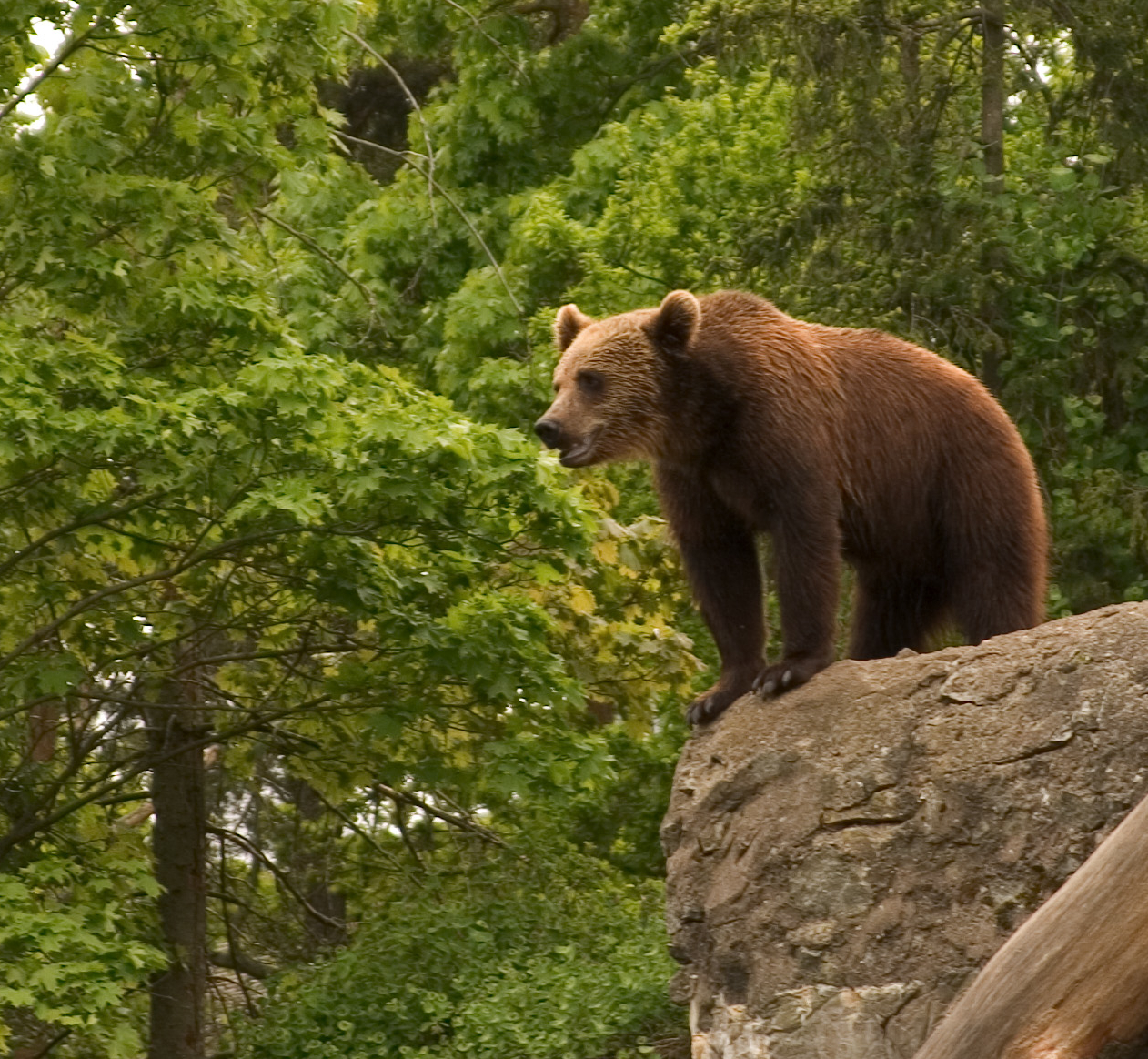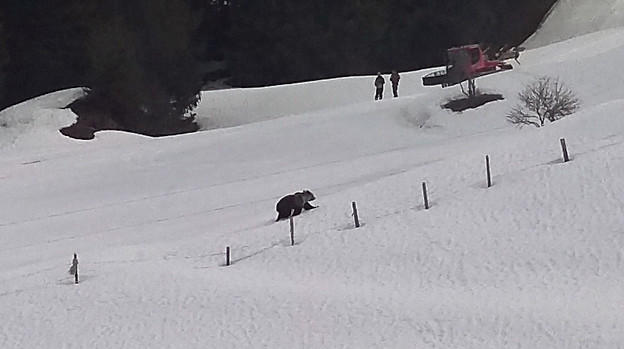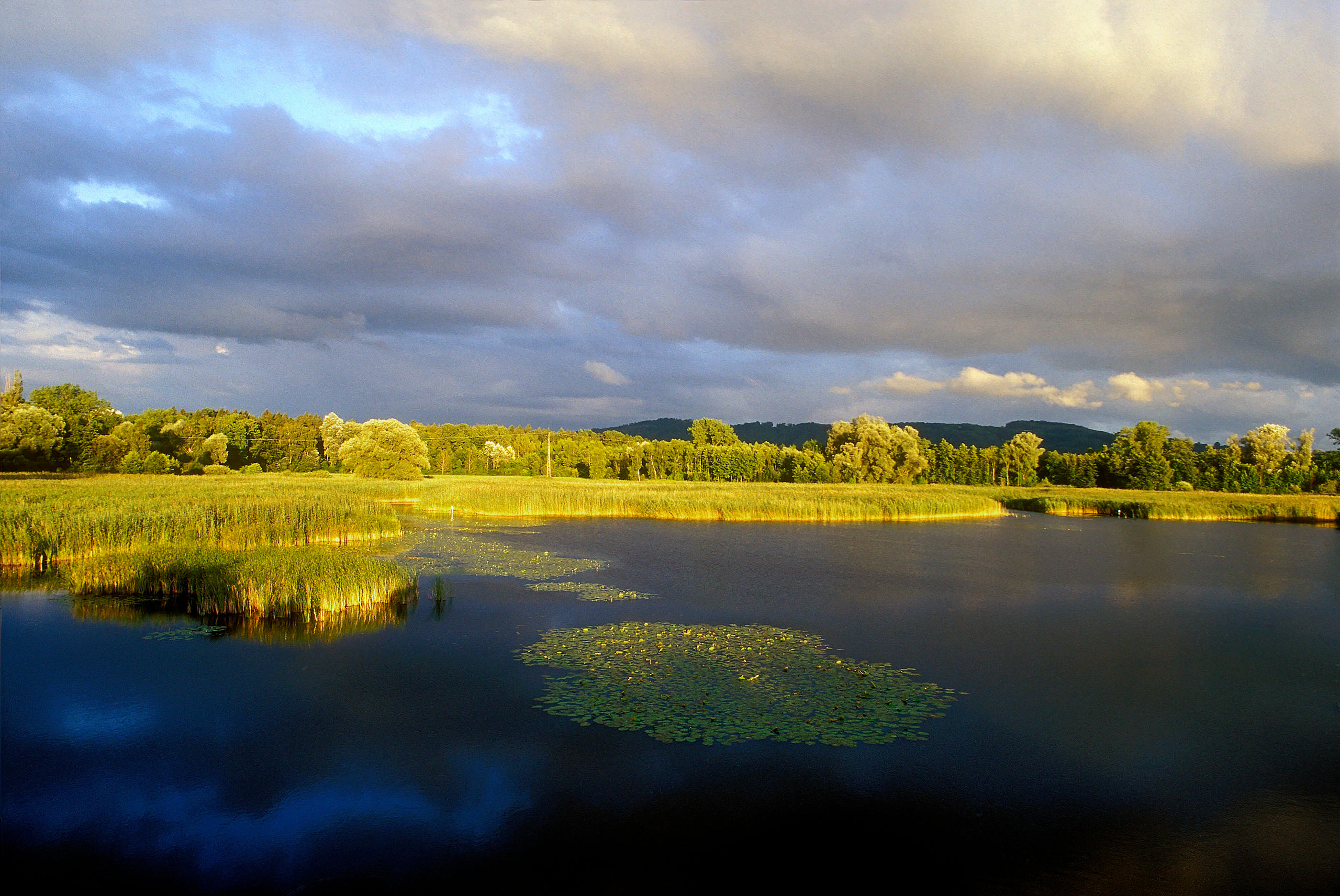From Serbia to the Swiss Alps: a bear’s adventure
What you see in this video is the rescue of Serbia’s last circus bear, Napa. The brown bear was kept in a small cage, but is now embarking on an adventure with a very Swiss flavour.
Napa was born in a zoo and it’s thought that he was sent to the Corona circus in Srbobran when he was young, and made to perform. In 2009, circuses in Serbia were banned from using animals, but it wasn’t until 2016 that veterinary inspections were allowed.
Kristijan Ovari, the curator of Serbia’s Zoo PalicExternal link, says he first spotted Napa at the Corona circus in 2012 and started making plans to free him and bring him to the zoo. He explains, “Many organisations were involved. Thanks to the Four PawsExternal link animal protection foundation and the Serbian ministry of the environment, everything went well. There were many problems and complications, but we managed to rescue him and he was taken to Zoo Palic in December 2016.” The video shot by Four Paws shows his release from the cage and transfer to the zoo in a bear ambulance.
Napa’s fur and teeth were in a poor state. He had a habit of pacing up and down, and it took him a while to learn to trust the zoo keepers. Kristijan Ovari continues the story, “In the beginning we were a little bit afraid because he suddenly lost weight, but soon we realised he was dropping fatty tissue. Thanks to the protein-rich food he was getting, he could build up some muscles”.
After less than two years in the zoo, he embarked on a new life in Switzerland. In a few days time, we will show you a video of his journey.
Four Paws, an international non profit organisation with its head quarters in Vienna, is one of a number of charities focused on bear welfare, along with “Die Stiftung für Bären” (Foundation for Bears) in Germany, “Bears in Mind” in the Netherlands, and the “Liberty Bear Sanctuary” in Romania, to name but a few. Four Paws has rescued more than 90 bears in the last few years and placed them in conservation centres in Bulgaria, Germany, Kosovo, Austria, Ukraine and Vietnam.
More protection for bears
The World Wide Fund for Nature External linkestimates that the total global population of brown bears is above 200,000. Russia has the largest number, believed to be over 100,000. Despite improved public opinion and legislation to protect bears, there are still reports of the animals being captured and treated inhumanely. Four Paws speculates that this is often due to ignorance on the part of their owners about the proper keeping of bears.
In Siberia, the practice of taking cubs from their mothers and training them as dancing bears is said to continue. The non-governmental group, Bear ConservationExternal link, says it is carrying out more research into the status of dancing bears, particularly in Siberia, with a view to launching a targeted campaign to finally bring this practice to an end throughout the world. Bear Conservation says the last dancing bears were rescued in Bulgaria in 2007, and in Serbia in 2012.
In Bosnia Herzegovina and Slovenia, bears are still kept in small cages near restaurants, to attract customers. Since Autumn, 2010, it has been illegal to privately keep bears in captivity in Kosovo. A similar law was passed in Croatia in 2017. The omnivores are still said to be kept for bear fighting in Russia and Ukraine.
Bears in Switzerland
One hundred years ago, the brown bear became extinct in Switzerland, as in most other parts of the Alps. During the last few years, the remaining populations in Slovenia and especially in the Trentino, northern Italy, have been increasing once more. Thanks to legal protection and reintroduction programmes, bears are expanding and reclaiming areas of their former distribution.
But Switzerland is struggling with the question of how to help humans and natural predators coexist without friction. The few bears that have crossed the Swiss border have been hunted down and killed because they were considered a threat. A brown bear known as ‘M13’ was shot in 2013, after it proved impossible to keep him away from human settlements. At the time, it was the only bear known to have been living in Switzerland.

In July 2018, Swiss wildlife authorities confirmed the sighting of a brown bear in the Bernese Oberland, continuing the pattern of increased sightings over the previous few months.
From this summer, a new sanctuary External linkin Arosa, Graubünden, will be home to up to five bears rescued by Four Paws, including Napa. The enclosure, measuring 2.8 hectares, is due to open officially in August. Another special type of bear park can be found in the centre of the Swiss capital, Bern, along the banks of the Aare river. Brown bears have been living in the BearPark External linksince 2009.













You can find an overview of ongoing debates with our journalists here . Please join us!
If you want to start a conversation about a topic raised in this article or want to report factual errors, email us at english@swissinfo.ch.